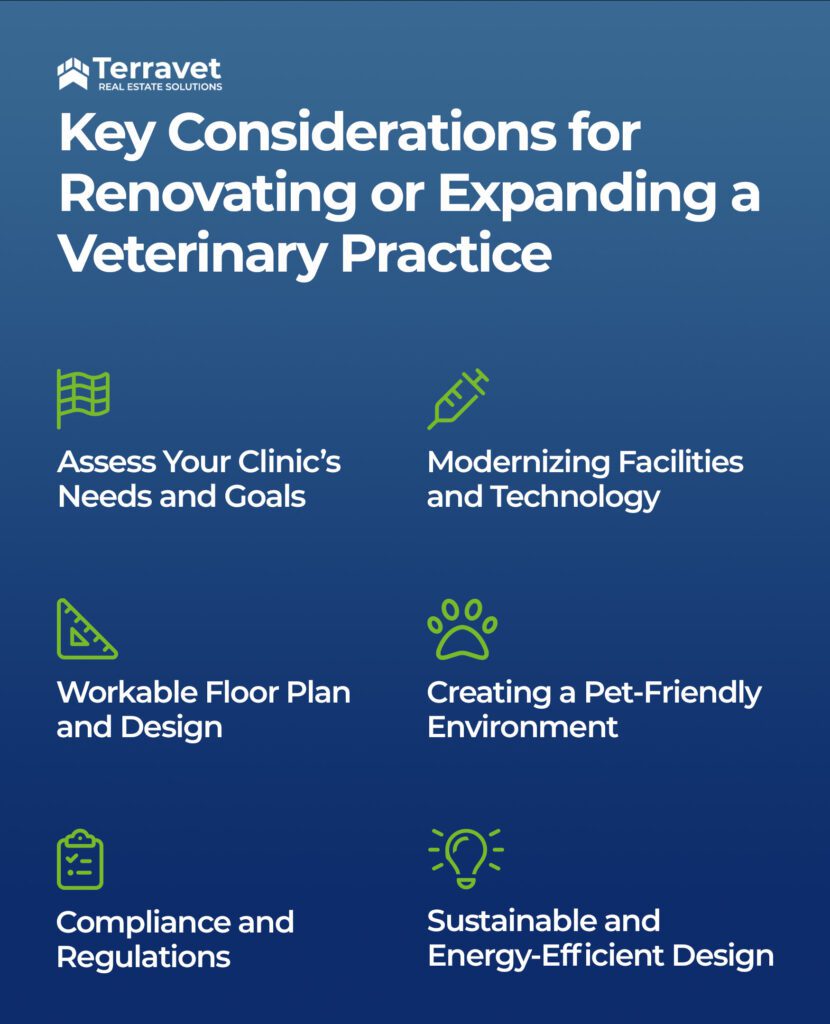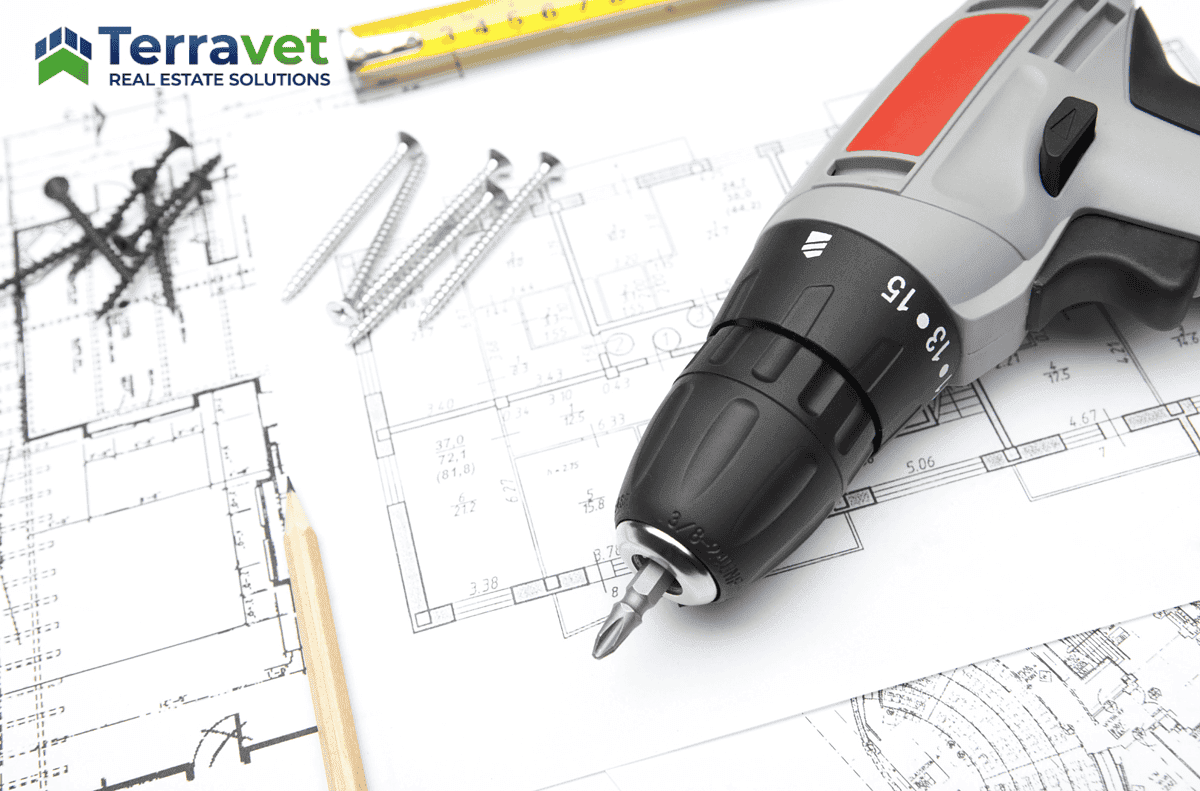Renovating your veterinary real estate
Is your veterinary practice in need of a makeover? Perhaps it’s time to consider a building renovation or expansion to create a more modern and functional space. Renovating or expanding your veterinary clinic can improve patient care, increase efficiency, and boost your practice’s revenue. In this article, we’ll delve into the key considerations you should keep in mind when embarking on a veterinary practice expansion or building renovation project.

1. Assess Your Clinic’s Needs and Goals
Before you begin any commercial building renovation or expansion, take the time to assess your clinic’s current and future needs. Are you looking to accommodate more patients, introduce new services, or enhance the overall patient experience? Clearly defining your goals will guide your decision-making process and ensure your project meets your clinic’s specific requirements.
2. Workable Floor Plan and Design
A well-designed floor plan is the foundation of a successful clinic renovation or expansion. Consider factors such as patient flow, separate waiting areas for different animals, and efficient use of space. If you’re expanding, ensure the new space seamlessly integrates with the existing hospital space, maintaining a cohesive and functional layout.
3. Compliance and Regulations
Compliance with building codes and regulations is paramount when renovating or expanding a veterinary clinic. Engage with architects and contractors experienced in commercial building renovation to ensure that your project adheres to all legal and safety requirements. This includes aspects such as accessibility, fire safety, and proper ventilation.
4. Modernizing Facilities and Technology
An updated clinic not only enhances aesthetics but also enables you to incorporate the latest advancements in veterinary technology. From state-of-the-art diagnostic equipment to digital record-keeping systems, modernizing your facilities can improve patient care, streamline operations, and attract clients seeking cutting-edge services.
5. Creating a Pet-Friendly Environment
Comfort is key for both patients and their owners. When renovating or expanding your veterinary practice, consider designing separate waiting areas for cats and dogs, using calming color palettes, and incorporating soundproofing materials to reduce stress for both animals and humans.
6. Sustainable and Energy-Efficient Design
Incorporating sustainable and energy-efficient design principles not only benefits the environment but also your clinic’s long-term operational costs. Explore options for energy-efficient lighting, HVAC systems, and eco-friendly materials to reduce your clinic’s ecological footprint and appeal to an environmentally conscious clientele.
These six considerations should be front of mind as you embark on your commercial building renovation or expansion to elevate your veterinary practice. By implementing these top considerations into your plan, you will accommodate your patients and their owners to feel comfortable and considered at every stage of their appointment. Discover more ways to ensure your veterinary business thrives, contact us today for advice from our team of veterinary real estate experts.



